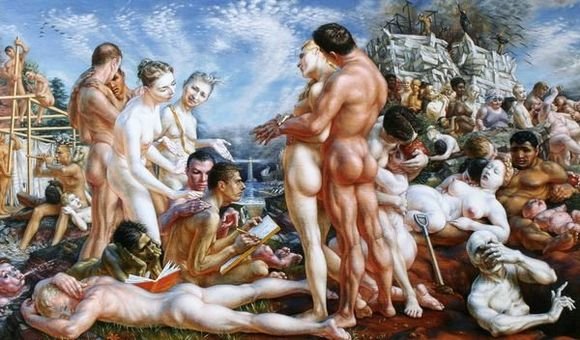
British actress Lashana Lynch has been assigned Bond’s codename. We have our first ever black, first ever female 007. She’s not James Bond though, that’s still Daniel Craig. The long legacy of the louche remains intact: he’s still white, still posh, still a he. But why has the social media sphere lost its mind over this new character? Why is it the character of James Bond that is subject to so much debate?
The unusual life of Vincent Poklewski Koziell demands an unusual telling. The author insists that this book is not a memoir. But then what exactly is it? The title suggests merely ‘a cocktail of reminiscences’; a series of spirit-wine-beer sodden anecdotes, loosely (hazily) adumbrating the author’s heady, convivial existence. Whilst he narrates the major events of his life – marriage, children, death, gains, losses, change – he does so reticently. The details which usually take main stage in a memoir are, in this book of reminiscences, parenthetical to the dizzying parade of extraordinary incidents.
Mary Butts needs to be reinstated in the modernist canon, but this is not the dominating concern of Andrew Radford’s book on this recondite figure. Radford’s neo-Romantic lens is the shaping force of this study, as the subject of the opening chapter makes abundantly clear. Before addressing the critical handling and neglect of Butts (in the second chapter), Radford first confronts the neo-Romantic movement, examining the ways in which its various proponents reimagined and remodelled the landscape of Romanticism.
Rhythm and Colour is, on the face of it, a hefty biography of three avant-garde dancers, now largely forgotten: Margaret Morris and her sometime students Loïs Hutton and Hélène Vanel. One could read this book as the tale of three independent, unmoneyed women triumphantly “making it” in a patriarchal world, with each of them enjoying success and notoriety even as the fight for women’s suffrage raged on around them. But Richard Emerson has much to say as well about the artistic movements, cultural centres and luminaries of the first half of the twentieth century.
In Flat Protagonists, Marta Figlerowicz tells us that ‘we have never been as complex, or as deep, as the realist novel would have us believe.’ This new theory of character not only asks us to doubt the critical emphasis upon character as source of the richness, complexity, and enduring interest of a novel, it asks us to rethink our own significance in relation to the wider world.
The definition of ‘subversion’ in this critical collection is, by the editors’ own admission, sprawling. Read my review of this collection of essays, published in the TLS, here.
When talking to Iain Sinclair about the state of London today, author Keggie Carew described the burgeoning population of coffee shop laptoppers as “dystopian”. In the TLS, I mount my defence of the so-called 'freelance freeloader'.
Today, on the eleventh hour of the eleventh day of November, many British people will have – as they have done every year since 1919 – observed a two-minute silence, remembering those who fought and fell in the First World War. During Sunday’s memorial service, wreaths will be placed on the cenotaph in Whitehall – Edwin Lutyens’s geometrical, abstract icon of remembrance for the “glorious dead”.
In A Passage to India, India looms as unfathomable, undefinable, or, to use E. M. Forster’s expression: a mystery and a muddle.
One of the biggest international art fairs is back. And London’s Frieze isn’t just about selling contemporary art, it’s an annual exhibition that defines and showcases the international art scene of today. This year Frieze is bound to focus on the bizarre, and reviews have been full of the fair’s “nuclear soup” (made from radishes grown near Fukushima) and “a leopard skin Jimmy Nail artwork”.













